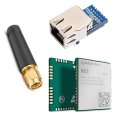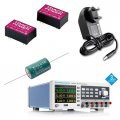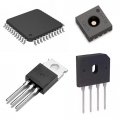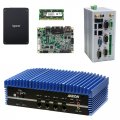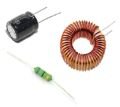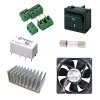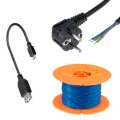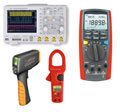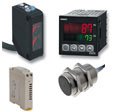The layout of components is an important step that aims is to minimize interfering voltages, radiation and overall immunity. What are the main principles? More in our next article about PCB´s design.
This is an archive article published 04/21/2017. Some information may no longer be up to date and in line with the current state. Please contact us in case of interest.
The layout of components is an important step that aims is to minimize interfering voltages, radiation and overall immunity. The basic principle is to place highly logic closer to the connector and a slower logic away from the connector. Sometimes meet all the recommendations is not possible, but always seek for a compromise and meet at least one rule, respectively as much as possible, if possible.
To basic principles of components placing belongs above all:
- Placing components from higher to lower bandwidths.
- Mutual physical separation of particular functional blocks (analog, digital, I/O, power line).
- Minimising of distances with aim to eliminate current loops.
Grounding is very important. There are two types of grounding given components leads to a common potential (GND):
- Single point – A
- Single point parallel – B
- Multi-point – C
Filtering of power supply in electronic circuits belong together with grounding k to the most important rules, which should be taken in mind at PCB design. Necessity of decoupling capacitors usage results from a assumption, that "every power supply is far from a load". Let´s suppose that pulse power consumption of a HCMOS gate is 15 mA for 3,5 ns, delay of a signal on a PCB (and also a supply current) is higher than 0,1 ns/cm, reaction time of a regulator on a step change of power consumption is roughly ~ 1 µs. Then it´s necessary to deliver power to a gate from a very near and fast voltage source, what a capacitor is. Proper functionality of decoupling capacitors depends on their capacity, ESR and its position on a PCB.
According to the function we differentiate three types of decoupling capacitors:
- Filtering (Bypassing) – serve as a wide band filter for power supply of a whole PCB or its part. Eliminates influence of power supply leads inductance. (C1, C2, C8; C1 and C8 ≈ 10µF až 1000µF). If possible always choose the largest capacity as possible.
- Local (Decoupling) – sserve as local energy sources for components and they also reduce pulse currents, that would go through a whole PCB. These capacitors must have excellent high frequency properties. It´s necessary to place them as near as possible to a component pin (C4, C5, C6, C7 ≈ 100pF to 0,1µF)
- Group (Bulk) – serve as an energy source for a simultaneous charging of several capacitive loads. Near a microprocessor it is C3 ≈ 10µF.
What in case of digital circuits?
Pre-requisites for a quality PCB design for digital applications start already at a circuit design (schematics design). It is necessary minimizing of pulse currents because there is quick switching gates by digital circuits. Try for the least possible amount of simultaneously switched gates of digital circuits. It's more about software. Also choose a suitable logic as for input capacities and pulse current demands, calculate decoupling capacitors (pulse consumption, noise immunity, outputs load), treat unused inputs (avoid undefined status).When preparing design of PCB we should minimising current loops surfaces by suitable concept of buses and power line and their placing on terminals, usage of SMT components (they´re smaller than TH components), selection of components with power pins on opposite sides – possibility of decoupling by SMT capacitor directly in a place of power supply leads of a given integrated circuit. Don´t use sockets at very fast circuits.
What needs to be taken into account when designing the PCB to avoid interference?
PCB need to be designed to keep the principle of electromagnetic compatibility (EMC). Electromagnetic compatibility of electric device is based on a fact, that the electronic device mustn´t interfere by its operation with other surrounded devices and that the device must be immune to interference from environment. PCB design from electromagnetic compatibility point of view is activity starting already at electrical schematics design of a design. It can be roughly said, that an electronic device, which „doesn´t radiate“ is also immune to interference.Among basic rules of a PCB design from EMC point of view belongs mainly:
- Minimising of currents in electronic circuits – by a choice of suitable types of components, selection of circuits in respect to input impedances etc.
- Minimising of a frequency spectrum – not to use unnecessarily fast components (rise and fall edges). Uselessly fast data communication.
- Filtration and protection of input/output terminals – ESD protection (Electrostatic Discharge) and solution of transition effects, limitation of radiation from leads.
- Minimising of current loops and track lengths – current loops can be minimised by proper components placing, track placing, earthing, power supply tracks, proper usage of filtration capacitors.
- Shielding – suppression of radiation and at increasing of immunity at the same time.
Videos
How to test the PCB? More about it in next article. Coming soon…
Always have the latest articles among the first. Subscribe to the newsletter.
Always have the latest articles among the first. Subscribe to the newsletter.
Do not miss these articles
Do you like our articles? Do not miss any of them! You do not have to worry about anything, we will arrange delivery to you.
